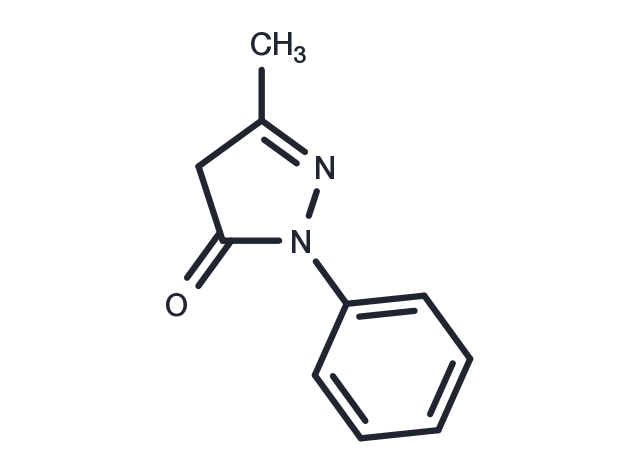Powder: -20°C for 3 years | In solvent: -80°C for 1 year


Edaravone (MCI-186)(MCI-186) is a potent new free radical scavenger used for the therapy of patients with acute brain infarction.

| Pack Size | Availability | Price/USD | Quantity |
|---|---|---|---|
| 500 mg | In stock | $ 43.00 | |
| 5 g | In stock | $ 52.00 | |
| 1 mL * 10 mM (in DMSO) | In stock | $ 48.00 |




| Description | Edaravone (MCI-186)(MCI-186) is a potent new free radical scavenger used for the therapy of patients with acute brain infarction. |
| In vitro | Edaravone significantly improves neurological function in animals. Treatment with edaravone substantially reduces TUNEL-positive apoptotic cells and increases the expression of Bcl-2, while decreasing the immunoreactivity of Bax protein in the peri-infarct area. The research demonstrates that edaravone provides excellent protection against ischemic/reperfusion-induced brain injury through a Bcl-2/Bax protein-dependent anti-apoptotic mechanism. Following a 24-hour infusion of edaravone into murine brain tissue, there is a notable reduction in infarct volume and amelioration of neurological deficits. In the early stages post-reperfusion, edaravone significantly inhibits the accumulation of HNE-modified proteins and 8-OHdG in the penumbral region, reduces the expression of iNOS, diminishes microglial activation, and lowers the formation of nitrotyrosine. Edaravone also markedly attenuates renal function and pathological outcomes in rat kidneys, significantly reducing free radical production in renal tubular epithelial cells as indicated by fluorescence. |
| In vivo | Edaravone optimizes the state of NOS by reducing the detrimental isoforms iNOS and nNOS, while increasing the beneficial eNOS, thus favoring neuroprotection in ischemic stroke. It inhibits oxidation and enhances eNOS expression without boosting production, improving and preserving cerebral blood flow during reperfusion without necessitating peroxynitrite formation. Edaravone exerts its neuroprotective effect by mitigating neuronal damage from cerebral ischemia and inhibiting endothelial injury. |
| Cell Research | Cell viability is quantified by MTT assay and trypan blue staining. MTT (5?mg/mL, 20?μL) is added to each well and incubated for 4?h at 37°C after the drug treatments. The medium is removed and the cell pellet is dissolved in DMSO. Then, the optical density (OD) values are measured at 570?nm using an ELISA reader. |
| Synonyms | MCI-186 |
| Molecular Weight | 174.2 |
| Formula | C10H10N2O |
| CAS No. | 89-25-8 |
Powder: -20°C for 3 years | In solvent: -80°C for 1 year
DMSO: 17.4 mg/mL (100 mM)
You can also refer to dose conversion for different animals. More
bottom
Please see Inhibitor Handling Instructions for more frequently ask questions. Topics include: how to prepare stock solutions, how to store products, and cautions on cell-based assays & animal experiments, etc.
Edaravone 89-25-8 Apoptosis oxidation-reduction Proteases/Proteasome Free radical scavengers MMP Inhibitor Matrix metalloproteinases MCI 186 MCI-186 inhibit MCI186 inhibitor
